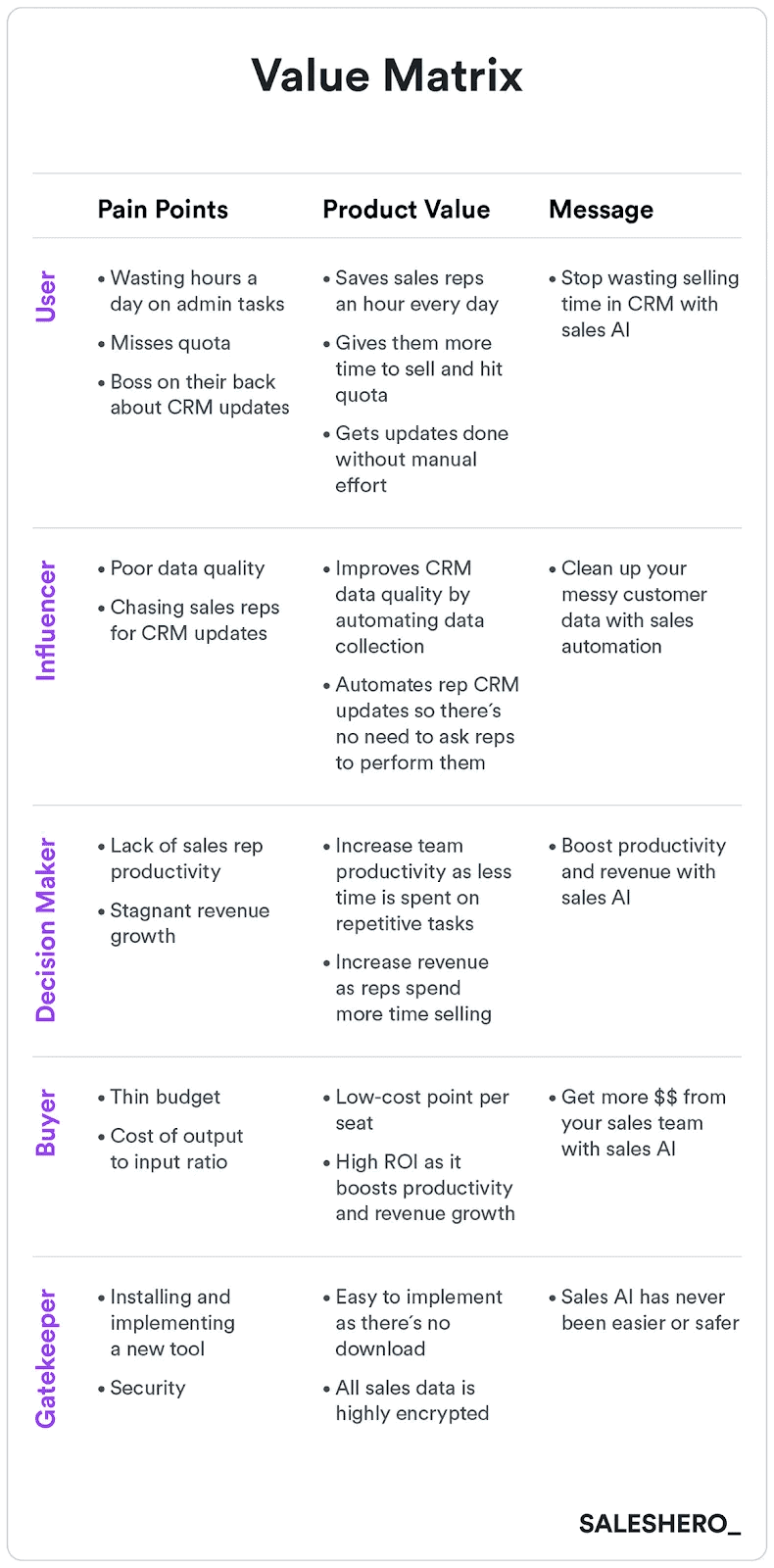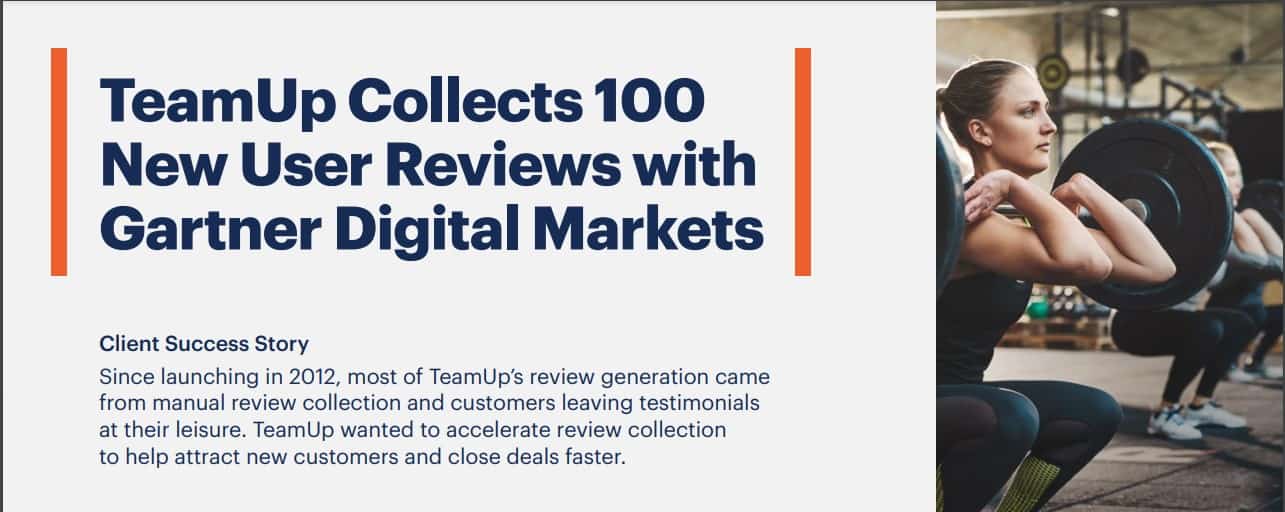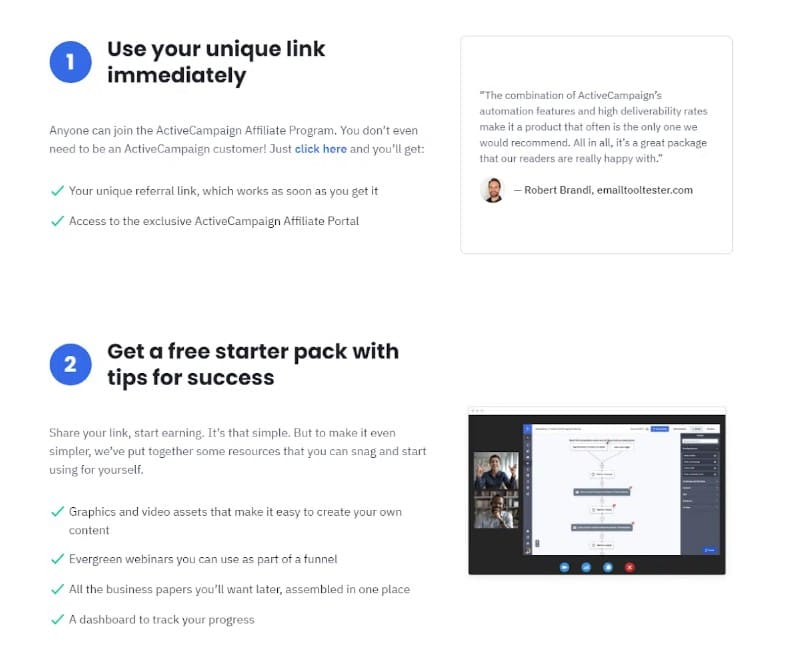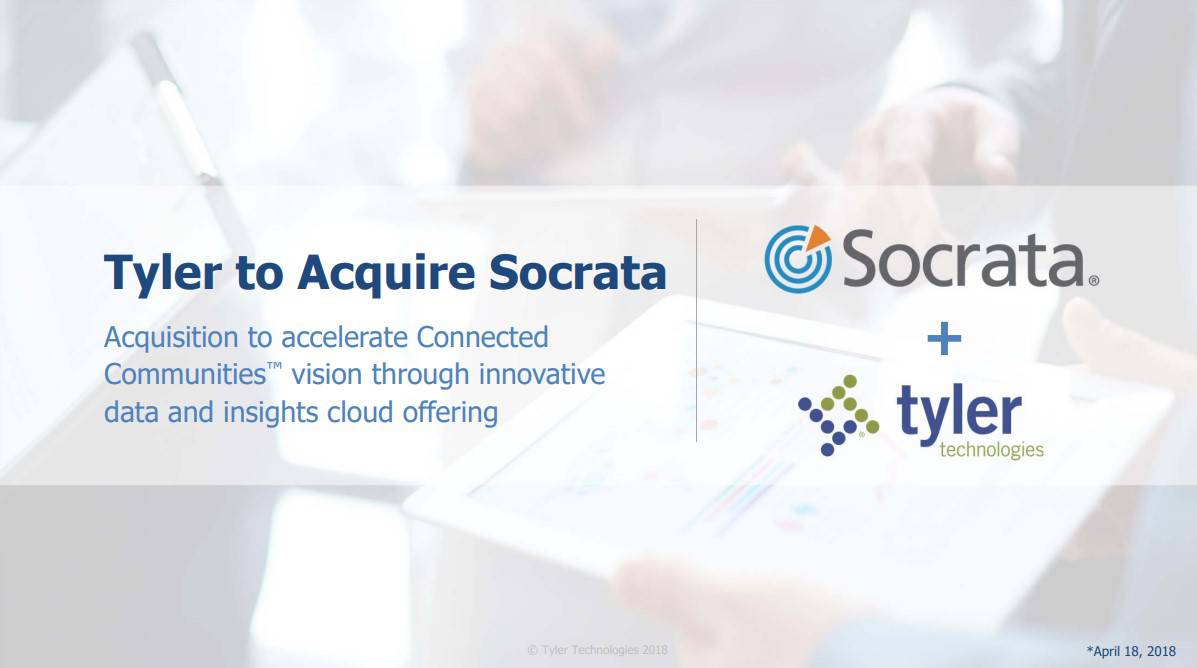How about validating your SaaS idea then and there before investing more resources in it? That’s the SaaS go-to-market strategy.
New SaaS companies are flourishing year by year; analysts expect 85% of corporate software will be SaaS by 2025. If you’re a SaaS startup, you’ll need a solid go-to-market strategy as you prepare to enter a competitive market.
You shouldn’t anticipate tremendous sales right after launch, regardless of how responsive the market is to your product. Your GTM strategy helps set realistic goals, keep the focus on the target audience, and avoid errors that result in poor customer reception.
This article guides you in drafting a thorough SaaS go-to-market strategy. We will also discuss seven unique examples for you to take inspiration from.
Table of Contents
What is a Go-to-Market Strategy?
A go-to-market (GTM) strategy is a comprehensive action plan to launch a new business product or service. It outlines the steps to reach your target audience with a competitive advantage when you:
- Launch a new product
- Approach a new market with a current product
- Want to approach multiple markets to explore growth potential
The GTM strategy holds a concrete record of your target audience, a well-defined strategy plan, and your sales and marketing tactics. There are various growth models, such as:
- Community-led growth
- Product-led growth
- Marketing-led growth
- Sales-led growth
| Community-led | Product-led | Marketing-led | Sales-led | |
| Definition | Community drives business with referrals and reviews. | Products drive the business with its unique features. | Marketing efforts, such as content marketing, help you drive business. | Business relies on the sales team to drive revenue. |
| Advantages | Build great relationships with customers.
Get feedback for reiterations and upgrades. |
Low customer acquisition cost.
Freemium product brings in paying customers. |
It lets you promote your product right from the start.
Customer acquisition costs go down with time. |
Build customer relationships with a solid sales team.
Ensure high-lifetime values. |
| Disadvantages | Community building takes time.
You need to interact with the target audience with engaging content. |
Growth is slow and might not be enough if the product can’t stand the test of time. | Marketing-led growth is a long game and doesn’t offer immediate results. | Heavily dependent on salespeople. |
| Tips | Build a subscription list to send out regular content.
Bond with the audience over a shared mission to interact. |
Plan for highlighting the benefits from the beginning during the onboarding process. | Don’t wait until the launch to start marketing your solution.
Be consistent in your marketing efforts to see long-term results. |
Combining sales-led growth with one of the other growth models is best. |
Choosing the right GTM strategy based on your growth model is necessary to beat the odds and succeed as a SaaS startup.
Why is a Go-to-Market Strategy so Important?
A robust go-to-market strategy helps refine your marketing strategy to reduce risks and align to a common revenue goal. It allows your product marketers, their teams, and stakeholders to ensure your solution reaches the right people at the right time. Companies may aim at the wrong audience without a well-defined go-to-market strategy or employ costly and inefficient methods to connect with their target market.
GTM strategy considers some important aspects to help your SaaS business succeed, including (but not limited to):
- Target demographic
- Price strategy
- Positioning strategy
- Intended message
- Appropriate marketing and sales channels
With these considerations, GTM strategy may even help you assess the probability of success for your products. It lets you determine whether an idea is worth pursuing or when to let it die before it runs down your company. It sets the stage for a stable launch without surprises from customer behavior and competitors’ advantages.
Read also: SaaS Business Model Working Explained
Core Components of Your SaaS GTM Strategy
Several components are necessary for a well-thought-out go-to-market strategy. Before you can sell your SaaS product, you must have a firm grasp on who will purchase it and why. Here are the core elements you must include in your SaaS go-to-market strategy.
Identifying and understanding your target audience
Many SaaS enterprises fail when they don’t target users in a single geographic area and market. Crafting your ideal customer profile (ICP) or user persona should be your priority. Creating customer profiles lets you establish a foundation for your marketing strategy and campaigns and find and monitor the correct indicators to zero down on a single market at a time
All other aspects of your SaaS marketing plan come from understanding the target demographic. A few questions you can ask yourself while figuring out your target audience are as follows:
- What kind of people are most likely to buy your product?
- Which demographic are you aiming for?
- What channels of communication do they prefer the most?
When developing your SaaS company’s ideal customer profile (ICP), you may want to consider the following characteristics of your clients:
- Industry or domain of expertise
- Professional roles
- Geographical area
- Size of the company they work with
- Pain points with available solution
- Need for your solution
- The kind of technology they use
- Time constraints and financial resources
Crafting a compelling value proposition
With a solid understanding of your target audience, you’ll understand who needs your product. However, you need to highlight the benefits unique to your SaaS product to get these people to subscribe to your service over your competition. For this, you will need to develop a value proposition that’s not only unique but also compelling.
Defining value proposition will help you craft a compelling message for your campaigns and landing page content and urge users to take action.
Pro tip: You can use a value matrix to:
- Pinpoint the pain points of the audience
- Familiarize yourself with your product’s features, benefits, and value
- If and how your product addresses your audience’s problems

Select the right pricing strategy for your SaaS product
Your company’s pricing strategy is critical to your overall SaaS go-to-market strategy. Subscription-based models demand a commitment from the customer and must deliver throughout the lifecycle.
If you’ve done your target audience research right, you’ll know how much the customers are willing to pay for a product like yours. You can also check what competitors are pricing their products by choosing one of the following subscription models:
- Flat rate model: This model doesn’t offer choices. It lets anyone unlock all capabilities of your product at a predetermined monthly rate.
- Feature-based pricing: Feature-based pricing offers fair pricing based on the user’s requirement for functionality. Users only pay for what they utilize in your solution. They can upgrade anytime if their use case evolves or needs more functionality.
- User-based prices: This pricing model offers options based on the number of users your client anticipates will work with your SaaS product. User-based pricing provides flexibility to pay a price that suits the size of the business.
- Tiered pricing model: A combination of feature-based and user-based pricing models, the tiered pricing model is a common SaaS pricing strategy. It entails attracting clients by offering a variety of packages with different features and costs.
- Value-based model: In this approach, you focus on the customer’s problems, figure out how much those problems are worth, and then charge a price that matches that value. The cost of your SaaS product should reflect the value the client perceives it to provide.
- Pay-as-you-go model: Tech infrastructure providers use this pricing model to charge customers according to their use. Customers might increase their membership charges based on how much time they spend using your product.
- Usage-based pricing: With this strategy, you charge customers based on how much they use the solution. You may track this by looking at metrics like API calls, data storage, or the total number of users. It adapts to the demands of its users and lets them pay only for the resources they utilize.
- Freemium model: You might provide a freemium plan with restricted capabilities to let your customers test out the product. It allows them to determine if they need more features and decide whether to upgrade to a premium plan.
Pro tip: A well-thought-out pricing plan will balance making a profit and being competitive. A company has to choose between charging more than the competition or providing a cheaper alternative. Before deciding on a price, consider:
- Your product’s worth
- Your target market
- Operating expenses
- Pricing of the alternatives
Decide on sales and marketing tactics
Planning your sales and marketing strategy is an important part of a SaaS go-to-market strategy. You may build a robust digital marketing strategy by planning for:
- Content marketing
- Search engine optimization (SEO)
- Social media strategies
- Paid ads
In addition to a marketing plan, outline a customer-centric sales process for your SaaS product. Consider the specifics of software sales, such as demonstrations, free trials, and subscription models.
Your sales strategy needs to cover all the bases, from:
- Generating leads to finalized sales
- Emphasizing learning about client pain points
- Demonstrating how your solution addresses them
Pro tip: Use an efficient CRM system to monitor prospects and organize customer interactions as the sales process progresses. Enhance your workflow efficiency by leveraging time tracking software to pinpoint areas for optimization.
Read also: How to Maximize ROI With Strategic Product Placement
Choose the right distribution channels
Your target audience research reveals the channels they utilize the most. You should focus on these channels to promote your products. There are two ways to target your customers:
- Through organic channels, such as:
- Blogs
- Social media
- Email marketing
- Content marketing
- SEO
- Through paid channels, such as:
- Advertising
- Paid search
- PR
- Influencer marketing
When choosing software, 86% of purchasers rely on verified user reviews. Therefore, you may also consider customer reviews and rating platforms as a channel for distribution. If you choose the organic route, create a product profile. If you want to get paid traffic, sponsor ads with the PPL option.
Pro tip: Balancing organic and paid channels is a good idea. When creating your SaaS go-to-market strategy, outline four or five distribution channels to provide the best results. The success of your selected channels should be continuously monitored and tested.
Personalize content for each channel
Once you’ve selected your distribution channels, personalize content for each channel. You may modify the content from one channel to fit the format of another. In general, the following works.
- SEO blog posts have detailed content meant to educate your target audience.
- Emailers personalize the content as per the recipient’s interest and other characteristics.
- Landing pages have a compelling call-to-action (CTA) and follow persuasive copywriting practices.
- Social media content is short-format and mostly rich with visual elements, such as infographics and short videos.
- Happy customers rate and review SaaS products on software review websites directly.
Pro tip: To make your content more engaging, you can use:
- Storytelling
- Case studies
- Discounts, loyalty programs
- Testimonials from satisfied users
Identify your success metrics and set business-level KPIs
If you want your company to succeed, you need to measure your progress with the right key performance indicators (KPIs). You may effectively use KPIs by defining your business goals with the SMART criteria:
- Specific
- Measurable
- Attainable
- Relevant
- Time-bound
It is important to establish short-term and long-term key performance indicators (KPIs), ensure they are achievable, and regularly monitor and adapt your progress. Some common metrics and KPIs SaaS companies rely on are:
- Customer lifetime value (LTV)
- Customer acquisition cost (CAC)
- The average revenue per user (ARPU)
- Churn rate
- Market share
- Conversion rates
- Lead-to-opportunity ratio
Pro tip: Focusing on high-level and low-level key performance indicators is critical to guarantee an eye on all aspects of your business. Low-level metrics concern your company’s internal operations and divisions, such as:
- HR
- Sales
- Marketing
- Support
In contrast, high-level KPIs are concerned with the company’s overall performance.
Integrate customer success into Your GTM strategy
Planning for customer success is essential for any SaaS go-to-market strategy to ensure long-term client satisfaction and retention. Since SaaS revenue depends on renewals and upsells, a customer success plan won’t be simply about resolving issues. You’ll have to plan for proactively helping customers achieve their goals through your product. You may provide:
- Onboarding documentation to new customers
- Educational resources and self-service content
- Data migration services
- One-on-one training
- 24×7 user support
Pro tip: Create feedback loops to improve your offer and build customer trust. Touch base with the customers periodically to track:
- How customers use the product
- How satisfied they are
- If they have any problems that you can solve
Take your CRM selection process very seriously
Your SaaS go-to-market strategy isn’t complete without a robust customer relationship management (CRM) platform. The tool should help you create, cultivate, and oversee the most appropriate customer connections from the beginning. A robust CRM makes it easier to:
- Communicate with clients
- Maintain track of their information
- Personalize content
- Automate certain manual tasks
Due to the prevalence of digital micro-interactions in modern processes, most startups prefer cloud-based CRM solutions. EngageBay, HubSpot, and Salesforce are some popular choices.
Pro tip: Before you choose a CRM provider:
- Assess your present requirements
- Determine a budget
- Understand the contract obligations
With this, you can compare features and prices across various solutions.
Read also: SaaS Marketing Automation Explained (+ Top Tools)
Diverse Examples of Successful SaaS GTM Strategies
To help you get started, we’ve included some real-life examples of GTM strategies. Look at these success examples and apply the main elements to your company if it will help. Remember that every SaaS company is different, so what works for one may not work for another.
1. Slack’s excellent targeting of the right customer segment with the right solution

A strong internal communication platform was a concept that Stewart Butterfield and his team came up with by accident. Butterfield is both the CEO and co-founder of Slack. The Slack team found that email was the most popular option for internal team interactions.
As a result, it deliberately positioned itself as the first choice for team communication. Slack’s GTM strategy focused on how its user-friendly features put an end to tedious and disorganized email chains, with capabilities such as:
- Voice calling
- Video chats
- Text messaging
- Group messaging
Their central message was Slack was more convenient than emails. Within the first hour of its introduction, it had 8,000 signups and 1.1 million active members 24 hours after its launch.
Despite the expanding number of team collaboration platforms, Slack remains committed to its goal and continues to upgrade with additional capabilities to address the difficulties of its intended audience.
Key lessons
- Define the target audience well to craft a solution that speaks to them in your SaaS go-to-market strategy.
- To remain competitive over the long term, deliver continuous value with upgrades in the solution.
Takeaway
- Slack knew its competition (emails) and targeted the pain points of its users directly.
- Slack positioned itself as a better option and solution to disorganized team communication.
2. Shopify’s success through content marketing
Shopify, one of the most prominent eCommerce platforms in the world, is wildly successful. It powers 4.36 million online shops in 175 countries. In addition to a great SaaS platform, we can’t ignore the role of Shopify’s solid content marketing strategy in its popularity. It distributes helpful content that guides its user to find success with:
- How-to guides for new eCommerce stores
- Blog posts rich with actionable advice on finding eCommerce success
- Podcasts featuring successful store owners giving tips and tricks
- Use of rich visuals, such as infographics, images, and videos
As a bonus, Shopify’s blog has frequent posts from eCommerce guru Richard Lazazzera, author of A Better Lemonade Stand.
Key lessons
- In addition to generating leads, this content helps SaaS brands build a strong bond with their users.
- When users successfully use your product/services via helpful resources, it fosters a sense of trust between the two parties.
Takeaway
- Build a rich repository for your SaaS business with content that helps users use your service or product more easily.
- Find out what your users prefer and create an appropriate mix of content with blogs, videos, podcasts, or social media content.
3. ActiveCampaign’s use of an affiliate program to drive subscriptions

In 2021, ActiveCampaign, a customer experience automation SaaS company, received $240 million in funding at a value of more than $3 billion. The startup showed a recurring income of more than $165 million. How does the company get so many recurring subscriptions? The secret is in its affiliate program.
ActiveCampaign has an affiliate program that offers an attractive commission to partners. The commissions begin at 20% and increase to 30% for frequently renewed memberships.
ActiveCampaign makes it easy for partners to earn with a dedicated portal for partners. The affiliates can use it to:
- Access various promotional resources
- Track sales
- Raise inquiries
A unique online community is available to ActiveCampaign partners, allowing them to assist other affiliates and remain informed about ActiveCampaign news.
Key lessons
- Before starting an affiliate program, consider how your partner can promote your SaaS product. With that in mind, build resources to get them started.
- Create a separate landing page or affiliate sign-up link to implement the affiliate program.
Takeaway
- Affiliates may enhance their sales by using abundant promotional tools, such as images, videos, and webinar access, in their content.
- ActiveCampaign understands the success of affiliates translates to the company’s success, and you should, too.
4. Canva leverages influencer marketing to triple its user base

Canva boasts over 125 million active users today. However, the easy-to-use design tool didn’t get much notice from niche creatives before 2014. How did they get where they are? They leveraged the power of social media marketing and collaborated with a branding legend: Apple’s Guy Kawasaki.
With Guy on board as an advocate, Canva began sharing inspiring and creative videos on platforms, including:
- YouTube
- Twitter (now X)
- And other channels
Within a year, the user base went up from 150K users to 4 million! Millions of niche creatives make beautiful graphics and designs to improve the appearance of their home pages and landing sites today.
Key lessons
- Strategic partnerships with the right influencers can help SaaS businesses accelerate growth and market penetration.
- Use influencer marketing to create compelling content and use it across various social media channels to see growth on different fronts.
Takeaway
- Canva strategically partnered with an influencer with persuasive and personality-driven marketing skills.
- Canva focused on a niche market using Guy Kawasaki’s persuasive techniques for substantial engagement.
5. Socrata pivots the GTM strategy to find a middle ground with the market
Your go-to-market (GTM) doesn’t always lead you to success. You run the risk of:
- Focusing on the incorrect demographic
- Adding features that aren’t essential
- Failing with your sales approach
However, that doesn’t mean you give up. You can pivot your SaaS go-to-market strategy as Socrata did.
Socrata was a data aggregation platform that allowed everyone to collect and display data. The SaaS business quickly realized that governments were adopting its platform as a trustworthy open data platform.
The corporation spent little time in cornering this unanticipated market by rethinking:
- Its product’s design
- Business approach
- Intended customer base
They seized the new market by adding security and availability features tailored to government organizations. Tyler Technologies purchased Socrata in April 2018. They wanted to use Socrata’s data exchange and analytics capabilities to speed up and improve their vision.
Key lessons
- It’s important to watch for audience and market reaction to your product. Offer flexibility in the current SaaS go-to-market strategy to pivot and capture new opportunities.
- The ability to quickly adjust business models in response to market feedback and trends is crucial for SaaS companies to stay relevant and competitive.
Takeaway
- Socrata shifted its marketing and go-to-market (GTM) tactics when it realized the new demographic interest.
- Socrata established itself as a reliable ally to the government by demonstrating its mastery of cloud-based solutions for data-centric administrations.
6. Dropbox’s freemium model for market penetration

Even though other companies provide cloud-based storage, almost everyone is familiar with Dropbox. The reason behind its popularity is Dropbox pioneered the use of freemium software. It was one of the first to provide a “try before you buy” option to win over clients who were hesitant to purchase and turned them into paying ones.
Dropbox follows the tried-and-true freemium model:
- All free users have 2 GB of storage by default.
- Customers may pay extra monthly or yearly to increase their capacity to one terabyte.
- Dropbox offers two different plans to meet the demands of its users: one for individuals and one for businesses.
Using this strategy, Dropbox brought in $1 billion in 2017 from 11 million paying customers, including individuals and businesses. As we know, the numbers just went up in the following years.
Key lessons
- The freemium pricing model is a good fit for a SaaS solution that needs more time for users to comprehend or benefit from.
- Customers’ perceptions of the brand improve, and their willingness to pay for premium alternatives increases when they upgrade with new, high-quality features.
Takeaway
- With 200 million users, Dropbox became a successful company. Its users generated income for the firm, although only about 1.6% to 4.0% did so. Therefore, businesses may take a hit when they can’t turn a sufficient number of visitors into buyers.
- However, in Dropbox’s case, they employed freemium pricing to encourage user adoption and get recommendations. It can be a great tactic to gain traction for early adoption.
7. TeamUp’s review collection strategy to gain credibility

TeamUp, a B2B fitness management solution, recognized the power of customer advocacy to find new users. Most of TeamUp’s review collection since 2012 was from users providing testimonials if and when they wanted to.
TeamUp strategized to speed up the review-gathering process with a review collection service to bring in new clients and seal transactions more quickly.
- It sent out surveys and collected experiences
- Offered incentives to leave reviews
This tactic helped TeamUp get 100 fresh reviews in under two months, increasing the product’s reputation in the eyes of potential customers.
Key lessons
- Collecting reviews not only helps establish credibility but also strengthens connections with customers.
- Furthermore, product teams may take any negative input to enhance your SaaS product according to user feedback.
Takeaway
- You may implement a review collection process in your SaaS go-to-market strategy for up-to-date, high-quality reviews to show off to potential consumers.
- Reviews also allow TeamUp to highlight its robust user community, a key distinction for any SaaS platform.
Read also: Key Metrics to Master Your SaaS Marketing Strategy
Do’s and Don’ts for SaaS GTM Strategy
Here are some key pointers to guide you on SaaS GTM strategy.
Do:
- Keep your SaaS go-to-market strategy simple: It’s not a comprehensive strategy for the company’s future. It’s just a plan to make your first $10,000 (or $100,000, depending on your pricing strategy) in MRR.
- Focus on your customer: You should make the consumer the focal point of your SaaS go-to-market strategy. Your product’s ultimate purpose is to serve the customer. Take the time to learn what they want and need.
- Divide the strategy for your sales funnel: Define prospects, leads, and paying customers. Outline the basic message, distribution channel, and the kind of action you’ll persuade them to take.
- Prepare your SaaS go-to-market strategy before launch: You must construct your strategy for reaching customers while developing your product or before starting the development process.
Don’t:
- Create a product without first considering your target market: You should’ve researched your market and know if your product has a demand before you start development.
- Expand the number of marketing tactics you use slowly: Focus on a single primary marketing channel, such as search engine optimization, cold emailing, or cold calling. Expand slowly with time only after you see desirable results.
- Approach enterprises without a valid reason or established connections: Enterprise organizations have longer sales cycles and more decision-makers. They are tougher to market to and seldom adopt early. Therefore, early-stage SaaS startups don’t initially benefit from targeting corporate clients, even if the deals are larger.
Read also: The 15 Best B2B SaaS Marketing Agencies and Consultants
Choosing the Right SaaS Go-to-Market Strategy to Use for Your Business
After reviewing the essential elements of a SaaS go-to-market strategy and several unique examples, it’s time to ask: What GTM strategy best suits your needs?
Our advice: Let the product or service you develop dictate your approach to going to market. Consider the long-term viability of your plan and the approach that would work best for your product.
At the same time, be prepared to be flexible. Business tactics change over time. You may change your approach whenever you need to. For example, if you feel that the product-led growth strategy isn’t delivering the desired results, you may need to switch the growth model.
A go-to-market strategy is more of a road map where you may focus on a smooth launch than a firm commitment to a 10-year plan.
Read also: The Most Effective SaaS Marketing Strategies for 2024
Conclusion
Good products may only launch with success if introduced to the right people at the right time. One of the most important parts of making a product is planning how to get it into the market, for which a robust SaaS go-to-market strategy becomes a must.
This guide discusses key lessons from successful SaaS examples to inspire your personalized SaaS go-to-market strategy. By now, you know the importance of your target audience, a compelling value proposition, the right pricing strategy, and sales and marketing efforts.
The journey of developing a GTM strategy is a continuous one. You’ll have to be open to adapting and improving your strategy to stay competitive in the long-term success.
FAQ
What is a SaaS go-to-market strategy?
A SaaS go-to-market strategy is a comprehensive plan to launch your product into the market. It details:
- Who is your target audience?
- How will you reach your target audience?
- How you’ll stand out from your competitors?
Why is customer success important in a GTM strategy?
The recurring revenue of software as a service (SaaS) companies relies on happy and loyal customers. Thus, customer success is paramount. Therefore, your SaaS go-to-market strategy must outline a customer success plan.
How can SaaS businesses choose the right pricing strategy?
To strike a balance between profitability and competitiveness, SaaS startups should determine their prices after market research, analyzing their competitors, and considering their business goals.



